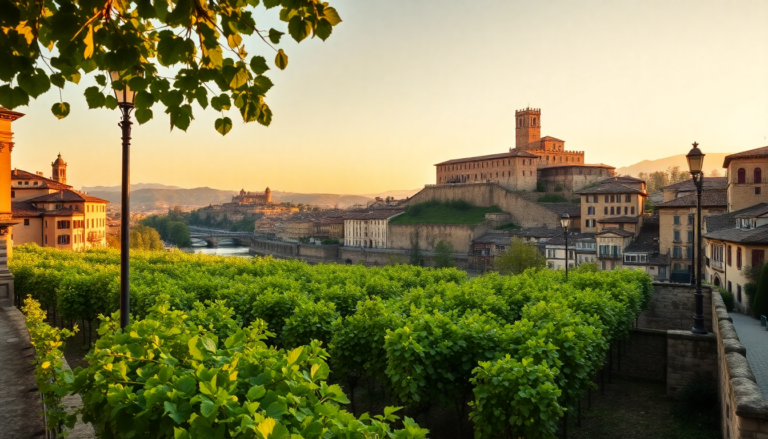Argomenti trattati
Verona, a city steeped in history and romance, is a treasure trove waiting to be explored. Nestled along the banks of the Adige River, it boasts breathtaking landscapes adorned with lush vineyards and is renowned for producing some of the finest wines in Italy. The beauty of this city is not just in its scenic views but in its rich tapestry of culture, ancient legends, and culinary experiences that are sure to delight any traveler. Walking through its streets offers a sense of discovery, revealing a blend of romantic charm, historical significance, and gastronomic delights that can be savored at a leisurely pace.
Iconic landmarks and historical gems
One cannot speak of Verona without mentioning its most iconic landmark: the Arena di Verona. This remarkable Roman amphitheater, dating back to the first century AD, stands as a testament to the city’s storied past. Its grand architecture and impressive size are breathtaking, and it continues to host vibrant performances, making it a cultural hub. I remember stepping into the arena for the first time and feeling the echoes of ancient cheers still lingering in the air.
Adjacent to the Arena lies Piazza Bra, the largest square in Verona, where locals and tourists alike gather. Historically, this lively piazza has served multiple purposes, from a marketplace in Roman times to hosting the annual Santa Lucia fair in December. The buildings that frame the square add to its charm, inviting visitors to stroll leisurely along the Liston, soaking in the vibrant atmosphere.
The heart of Verona: Piazza delle Erbe
Piazza delle Erbe, once the site of the Roman forum, is another must-visit location. Its bustling energy is palpable, surrounded by stunning historical buildings and vibrant market stalls. Here, the Fontana di Madonna Verona stands proudly, offering a picturesque backdrop for countless photos. The sight of the Torre dei Lamberti rising above the square serves as a reminder of the city’s medieval past, while the lively cafes and eateries provide perfect spots to enjoy a moment of relaxation amidst the activity.
Art and architecture in Castelvecchio
Shifting gears, the Museo di Castelvecchio transports you back to the years between 1354 and 1356, highlighting the rich history of the Scaliger family. This military fortress, now a vital museum, showcases a collection of artworks spanning from the Middle Ages to the Modern era. Walking through its halls, I felt a deep connection to the past, surrounded by pieces that encapsulated the evolution of art through the ages. The Ponte Scaligero, connecting the castle to the other side of the Adige, is a sight not to be missed. Its three arches create a stunning view, and the story of its destruction during World War II adds a layer of poignancy to its beauty.
Exploring Verona’s ancient bridges
Speaking of bridges, the Ponte Pietra is Verona’s oldest, dating back to the Roman era. Reconstructed after being damaged in the war, it serves as a bridge not just over the river but over time itself, allowing visitors to traverse centuries of history. Standing on this bridge, you can almost hear the whispers of those who walked before you, making it a fitting stop for anyone wishing to delve deeper into the city’s narrative.
Romantic flair and literary heritage
Verona is also a city of love, famously known as the setting for Shakespeare’s tragic romance, Romeo and Juliet. The Casa di Giulietta attracts countless visitors each year, all eager to catch a glimpse of Juliet’s balcony and perhaps leave a love note on the walls. It’s fascinating to see how this literary connection has transformed a medieval house into a shrine for romantics. Personally, I found the atmosphere intoxicating, with couples posing for photos while others simply took a moment to soak in the history of unrequited love.
Historical tombs and serene gardens
Not far from the city center, the Arche Scaligere captures the imagination with its Gothic-style tombs dedicated to the Scaliger family. This complex exudes a sense of peace and quiet, contrasting with the bustling markets nearby. The intricate ironwork and detailed stone carvings demand attention, making it an ideal place to reflect on the legacy of Verona’s rulers.
Then there’s the Giardino Giusti, a stunning 16th-century garden that feels like a step back in time. Wandering through its meticulously designed pathways, secret staircases, and hidden grottos offers a serene escape from the urban bustle. The garden provides stunning views over the city, and I distinctly recall feeling as if I had wandered into a fairy tale, surrounded by nature and history intertwined.
Getting to know Verona
Reaching Verona is surprisingly easy, whether by car, train, or air. The city is well-connected, with a direct train route from Venice taking just about an hour. The local airport, a mere 20 minutes from the city center, further enhances its accessibility. Once you arrive, the city’s charm will unfold before you, with hidden gems waiting to be discovered in every corner.
As you explore, don’t forget to indulge in some of the local cuisine. From traditional pasta dishes to exquisite wines, the culinary scene is just as rich as its history. I remember savoring a plate of risotto all’Amarone, a regional specialty that encapsulated the flavors of the land. Each bite was a delightful reminder of the cultural tapestry that makes Verona so unique.
In a world that often rushes by, Verona invites you to slow down and immerse yourself in its beauty, history, and romance. Whether you’re wandering through its ancient streets or enjoying a meal at a quaint trattoria, the magic of Verona is sure to linger long after you’ve left.

